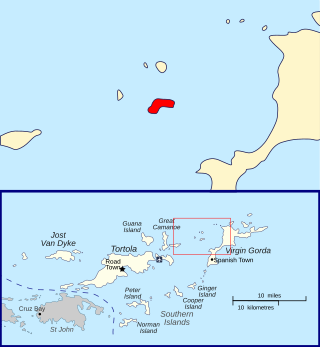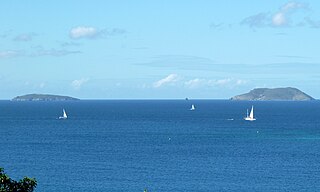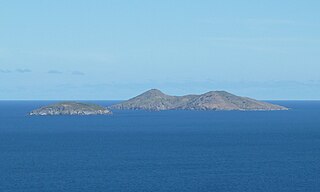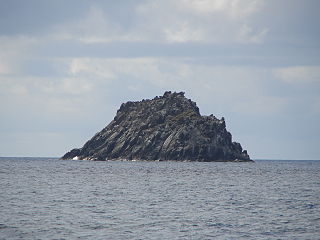
The British Virgin Islands (BVI), officially the Virgin Islands, are a British Overseas Territory in the Caribbean, to the east of Puerto Rico and the US Virgin Islands and north-west of Anguilla. The islands are geographically part of the Virgin Islands archipelago and are located in the Leeward Islands of the Lesser Antilles and part of the West Indies.

The Virgin Islands are an archipelago in the Caribbean Sea. They are geologically and biogeographically the easternmost part of the Greater Antilles, While the British Virgin Islands are officially designated as “The Virgin Islands”, the name is most often used to refer to the entire international grouping of the British and United States Virgin Islands together with the Spanish Virgin Islands, which, contrary to their name are in fact officially part of the Commonwealth of Puerto Rico, itself an unincorporated territory of the United States. Geographically, the northern islands lie along the Puerto Rico Trench. St. Croix is a displaced part of that same geologic structure. Politically, the British Virgin Islands have been governed as the western island group of the Leeward Islands, which are the northern part of the Lesser Antilles, and form the border between the Caribbean Sea and the Atlantic Ocean. The archipelago is separated from the true Lesser Antilles by the Anegada Passage and from the main island of Puerto Rico by the Virgin Passage.

Virgin Gorda is the third-largest island and second-most populous of the British Virgin Islands (BVI).

Anegada is the northernmost of the British Virgin Islands (BVI), a group of islands that form part of the archipelago of the Virgin Islands. It lies approximately 15 miles (24 km) north of Virgin Gorda. Anegada is the only inhabited British Virgin Island formed from coral and limestone, rather than being of volcanic origin. While the other islands are mountainous, Anegada is flat and low. Its highest point is only about 28 feet (8.5 m) above sea level, earning it its name, which is the Spanish term for the flooded land, "tierra anegada".

Tortola is the largest and most populated island of the British Virgin Islands, a group of islands that form part of the archipelago of the Virgin Islands. It has a surface area of 55.7 square kilometres with a total population of 23,908, with 9,400 residents in Road Town. Mount Sage is its highest point at 530 metres above sea level.

RMS Rhone was a UK Royal Mail Ship owned by the Royal Mail Steam Packet Company (RMSP). She was wrecked off the coast of Salt Island in the British Virgin Islands on 29 October 1867 in a hurricane, killing 123 people. She is now a popular Caribbean wreck dive site.

The coat of arms of the British Virgin Islands consists of a green escutcheon (shield) charged with a woman in a white dress and gold-coloured sandals, holding a lit golden oil lamp and surrounded by eleven other golden lamps. Adopted shortly after the islands became a Crown colony, it has been the coat of arms of the British Virgin Islands since 1960. The escutcheon dates from the early 19th century and is featured on the flag of the territory. The woman and the lamps represent Saint Ursula and her companions, the namesake of the islands.

The Spanish Virgin Islands, formerly called the Passage Islands and also known as the Puerto Rican Virgin Islands, West Virgin Islands, primarily consisting of the islands of Culebra and Vieques, are part of the archipelago of Puerto Rico, and located east of the main island of Puerto Rico, in the Caribbean.
East Seal Dog is an uninhabited islet of the British Virgin Islands in the Caribbean. It is located in a smaller sub-group of islands referred to as the Dog Islands, or more commonly, "The Dogs". Other islets in The Dogs include Little Seal Dog Island, West Dog Island and George Dog Island, all of which are to the northwest of Virgin Gorda.

Eustatia Island is a 30-acre island of the British Virgin Islands (BVI) in the Caribbean. The word "Eustatia" is a Greek derived word meaning, "good place to stay." The entire island, and a small neighboring island, Saba Rock, are under the same long term lease. The island is regularly featured and photographed for several publications and was listed as one of the top 20 most beautiful islands in the world in the December 2004 issue of Islands magazine.

Great Dog Island is an uninhabited islet of the British Virgin Islands in the Caribbean. It is located in a smaller sub-group of islands referred to as the Dog Islands, or more commonly, "The Dogs". Other islets in The Dogs include Little Seal Dog Island, East Seal Dog Island, West Dog Island and George Dog Island, all of which are to the northwest of Virgin Gorda.

Great Tobago is an uninhabited island of the British Virgin Islands in the Caribbean, located, along with sister island Little Tobago, approximately six miles west of Jost Van Dyke. The Tobagos are the westernmost of the British Virgin Islands. At 210 acres (85 ha) in size, it is surrounded by steep cliffs that also extend below the water. Since the 1990s, Great Tobago, Little Tobago islands, and nearby Mercurious and Watson Rocks are protected as part of the National Parks Trust.

Little Tobago is an uninhabited island of the British Virgin Islands in the Caribbean, located, along with sister island Great Tobago, approximately 3.6 nautical miles west of Jost Van Dyke. The Tobagos are the westernmost of the British Virgin Islands.

Moskito Island is an island off the coast of Virgin Gorda and has long been a favourite for scuba divers and sailors. For many years the island was the location of a sail-in dive resort named Drake's Anchorage. Sir Richard Branson purchased the island in 2007 for £10 million.
Little Seal Dog Island is an uninhabited islet of the British Virgin Islands in the Caribbean. It is located in a smaller sub-group of islands referred to as the Dog Islands, or more commonly, "The Dogs". Other islets in The Dogs include Great Dog, East Seal Dog and George Dog, all of which are to the northwest of Virgin Gorda.

West Dog Island is an uninhabited islet of the British Virgin Islands in the Caribbean. It is located in a smaller sub-group of islands referred to as the Dog Islands, or more commonly, "The Dogs". Other islets in The Dogs include Little Seal Dog Island, East Seal Dog Island and George Dog Island, all of which are to the northwest of Virgin Gorda.

Scrub Island of the British Virgin Islands in the Caribbean is a part of the Lesser Antilles, a group of islands that are young volcanic or coral islands. It is home to the Scrub Island Resort Marina and Spa.

The colony of the British Virgin Islands has issued its own stamps since 1866. The first Post Office was opened in Tortola in 1787. At the time postage stamps were not yet invented, and it was not until 1858 that a small supply of adhesive stamps issued by Great Britain depicting Queen Victoria were utilized by the local Post Office. These stamps were cancelled by an A13 postmark and are extremely rare so cancelled.
Atlantic Air BVI (AABVI) was an airline based in the British Virgin Islands (BVI) in the Caribbean which started up in 1992 with one Short 330-200 (VP-LVR) commuter turboprop aircraft. AABVI ran a service between Tortola, BVI and San Juan, Puerto Rico, with five round trip flights a day operated seven days a week. On 6 May 1993 the Short aircraft experienced an aborted take off from Tortola and ran off the end of the runway into Trellis Bay. There were no serious injuries.

Carvel Rock is an uninhabited islet of the British Virgin Islands in the Caribbean, less than 2 acres (8,100 m2) in size. It lies at the southern edge of the archipelago, south of and roughly between Ginger Island and Cooper Island.

















